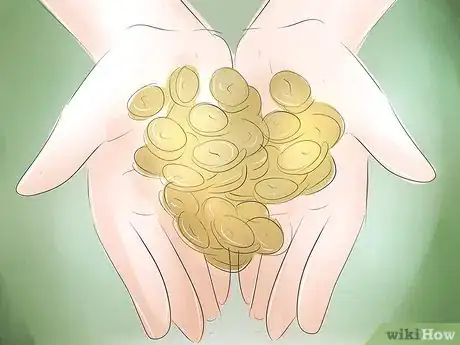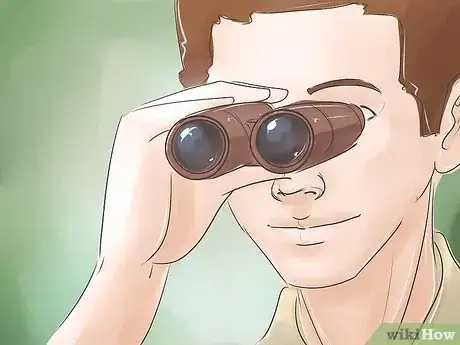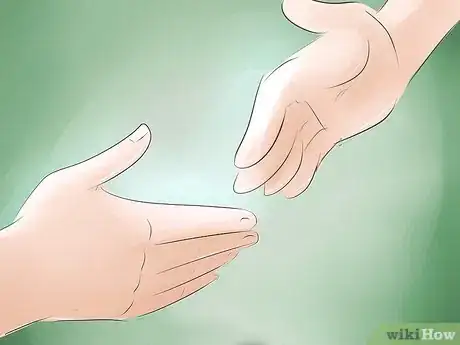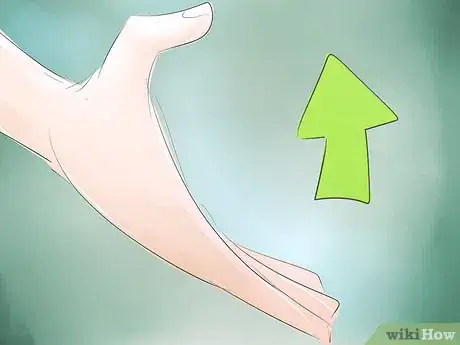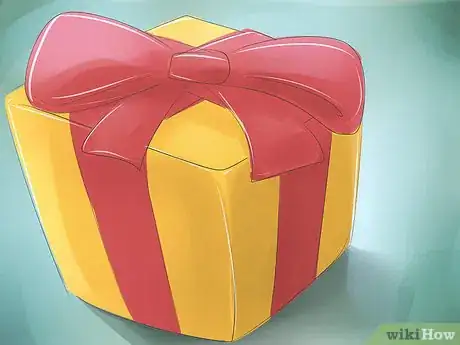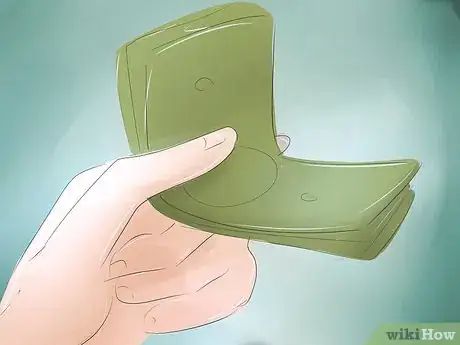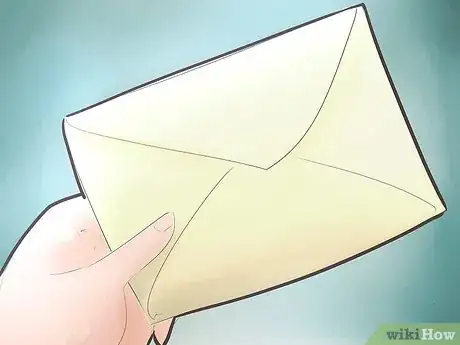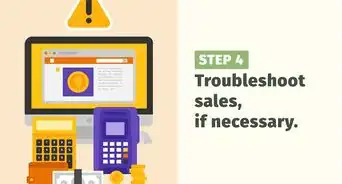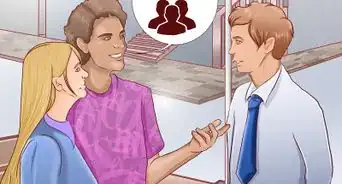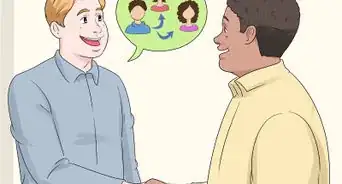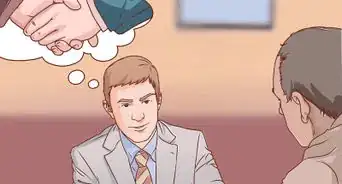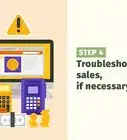X
wikiHow is a “wiki,” similar to Wikipedia, which means that many of our articles are co-written by multiple authors. To create this article, volunteer authors worked to edit and improve it over time.
There are 11 references cited in this article, which can be found at the bottom of the page.
This article has been viewed 51,541 times.
Learn more...
Being a good seller takes considerable care and effort. You'll need to highlight the value of the product itself, but you'll also need to put just as much effort into good customer service and communication.
Steps
Part 1
Part 1 of 3:
Pitch the Product
-
1Focus on value. You should sell high-quality products that the customer can actually derive benefit or pleasure from.
- Buyer's remorse is a reaction you should try to avoid at all costs. You may have made a one-time purchase, but a customer who regrets purchasing your product won't return a second time and probably won't recommend you to anyone else.[1]
-
2Research the competition. Customers will only consider buying from you if the product you offer can compete in quality and price with similar products.[2]
- Determine who your competition is, then spend some time researching your competitors' products.
- If you sell within a broader online marketplace (like eBay, Etsy, or Amazon Marketplace), you'll need to focus your attention on competing sellers within that marketplace.
- Similarly, if you sell products in person, you'll need to research local competitors to make sure that your prices can compare positively with theirs.
Advertisement -
3Show the product. Buyers prefer to see the exact product they'll be purchasing. When possible, they will usually want to handle the product directly before agreeing to purchase it.[3]
- This is a fairly simple task to accomplish in person, but when you're selling online, succeeding visually will require the use of high-quality photographs.
- Photographs of your products need to show each item in the best possible light and from all possible angles. Your primary photograph for the product should show the item at its best.
-
4Make it clear. Communication is important, but in most cases, the buyer should be able to find out everything he or she needs to know about a product without saying a word to you.
- The price of an item should always be visible, as should any information regarding the contents or origin of the product.
- This point is especially crucial for online sales. Most customers will never speak to you before deciding whether or not to buy from your online shop, so any information you would usually state in conversation should be provided in the item's description.
-
5Back up feeling with fact. May people use both their hearts and minds when making a purchase. You'll need to use emotion to grab the customer's attention and reason to seal the deal.[4]
- For instance, a book's catchy title and appealing cover art appeal to a prospective buyer's emotions. The back cover summary of the book's plot appeals to the buyer's mind by presenting information that lets the buyer know if he or she might actually enjoy the book.
Advertisement
Part 2
Part 2 of 3:
Communicate with the Customer
-
1Open the lines of communication. Invite open communication from the beginning through the end of the overall sales experience.
- Anticipate questions and answer them before your customers have to ask.
- This can be especially important for online sales. Keep your customer updated on the status of the order. Let the buyer know when you've processed payment and when you've shipped the item. Check in later to make sure that the item arrived safely.
-
2Get personal. It may not be feasible to build a close relationship with every potential customer you meet, but you should try to establish a temporary connection with each prospect you come into contact with.[5]
- By showing the customer that you view him or her as a human instead of a paycheck, you encourage the customer to view you as a fellow human, too.
- When selling a product in person, carefully observe the approaching prospect. Try to find something you have in common or offer an honest compliment.
- When selling a product online, thank the buyer for his or her interest. Demonstrate interest in the buyer's needs, too, by asking questions that can direct the buyer to the best product for his or her circumstances.
-
3Treat each customer as an individual. No two customers are exactly alike, so you'll need to pay attention to each customer's personality and act accordingly.[6]
- On a basic level, introverted customers usually like to be left alone while extroverted customers may prefer to be actively engaged.
- For sales made in person, you'll need to pay attention to body language.
- For sales made online, you'll need to wait for the customer to reach out to you with a question or comment. Once that happens, try to respond with the same level of enthusiasm demonstrated by the customer's words.
-
4Respond to concerns. Customers want their money's worth; in other words, they want to buy good products that will last a long time. If a customer has some concern about the value of your product, you need to address that concern honestly and tactfully.
- Some buyers will have a direct question about your product, like an inquiry on the size, weight, or functionality of the item.
- Oftentimes, though, concerns are masked by misconceptions. It is your job to identify and correct the perception that prevents the buyer from purchasing your product.
-
5Be honest. No matter what your customer asks or says, your reply must always be honest. You should never overstate the value of a product or ignore sour details for the sake of making a sale.[7]
- If the customer catches you in a lie, you'll almost always lose that sale. Even worse, that customer may never consider buying from you again and could even discourage others from buying from you, too.
- On the other hand, you might still lose the sale by being honest about the shortcomings of a particular product, but you'll build a good reputation with that potential buyer. That positive reputation may bring the buyer back to your shop for a different product.
-
6Keep your cool. The sales environment can be a stressful one, but if you want to succeed as a seller, you'll need to learn how to handle that stress in a calm and collected manner.[8]
- Rude customers can be especially trying, but you'll need to resist the urge to return discourtesy with discourtesy. Being friendly with a rude customer might be impossible, but you should still be polite and professional.
Advertisement
Part 3
Part 3 of 3:
Go the Extra Mile
-
1Avoid acts of desperation. Nobody likes to feel pressured during a sale, so when interact with your customer, you need to avoid any statement or action that may create tension.[9]
- Persistently and consistently engage the customer, but once your customer starts backing off, you need to do the same. Doing otherwise may make you seem pushy and intimidating.[10]
-
2Encourage appropriate add-on purchases. Depending on the circumstances, you might be able to increase the sales total by recommending products related to the main product your customer has decided to buy.
- Choose items that may genuinely benefit the customer. The add-on product should either improve the original product or address some fear related to the original purchase.
- For instance, you might recommend matching earrings to a customer interested in buying a necklace or security pens to a customer buying a checkbook cover.
-
3Package the product with care. At minimum, purchases must be packaged safely before being handed or shipped to the customer. It's also good to package purchases in an aesthetically pleasing manner.
- Products that can break must be wrapped in an adequate amount of padding or tissue paper to protect them.
- Consider printing shopping bags with your company's logo or including customized business cards inside boxed packages. Even small details can make the buying experience more exciting for the customer.
-
4Offer samples and free gifts. Encourage customers to buy another product later by including a free sample of that product with his or her original purchase.
- For example, you might include small sample tubes of lip balm when a customer purchases other lip care products from you, or a sample swatch of perfume when a customer purchases a matching lotion.
- Unlike samples, free gifts won't encourage the customer to buy any specific product from you in the future, but they can build your reputation with the customer and cause him or her to visit your shop again. Gifts should be small but meaningful. For instance, a seller at a book store might throw a free bookmark into the shopping bag before handing it over to the customer.
-
5Sacrifice when necessary. When an unforeseen circumstance damages the product after the transaction has already concluded, and neither you nor the buyer are at fault, you will need to take the loss instead of forcing it on your buyer.
- You may never encounter this issue if you sell in person, but you'll probably deal with it at some point if you plan to sell online. For example, if the purchased product gets lost or damaged in the mail, you'll need to be willing to offer a refund or replacement if you want to keep your customer happy. Happy customers are more likely to buy from you again and recommend you to others.
-
6Follow up. When appropriate, consider following up with the customer after the transaction is complete. Doing so suggests that you genuinely care about the customer beyond his or her wallet.[11]
- If you've made an online sale, for instance, send an e-mail to the customer a few days after the product was due to arrive. Ask if the package arrived in good shape and if the product meets his or her needs.
- For sales made in person, following up might not be necessary. You should make it easy for the customer to contact you again by providing business cards or by printing contact e-mail addresses and phone numbers on the sales receipt.
-
7Learn from experience. Build on past success and correct past mistakes. Selling is a skill you'll need to continually improve if you want to survive in the broader marketplace.
- Review your past successes. Ask yourself which tactics encouraged the customer to buy from you and include those in your future selling experiences.
- Likewise, review your past failures. Try to identify things that drove the customer away and avoid making similar mistakes in the future.
Advertisement
Community Q&A
-
QuestionWhat do I do if I'm selling something and if the buyer is being a jerk?
 DonaganTop AnswererIf you're not desperate to make the sale immediately, and if you haven't yet made a commitment by signing a sales contract, you're free to back out of the deal. You might consider explaining politely to the buyer why you're backing out. If you're already committed to the sale, grit your teeth and go through with it. If you have the opportunity for seller feedback, you might give the buyer a negative review.
DonaganTop AnswererIf you're not desperate to make the sale immediately, and if you haven't yet made a commitment by signing a sales contract, you're free to back out of the deal. You might consider explaining politely to the buyer why you're backing out. If you're already committed to the sale, grit your teeth and go through with it. If you have the opportunity for seller feedback, you might give the buyer a negative review.
Advertisement
References
- ↑ https://blog.hubspot.com/service/buyers-remorse
- ↑ http://www.eyesonsales.com/content/article/10_tips_that_separate_the_good_sellers_from_the_great_ones/
- ↑ https://www.etsy.com/seller-handbook/article/the-ultimate-guide-to-product/143986679284
- ↑ http://www.copyblogger.com/psychological-selling/
- ↑ https://blog.hubspot.com/sales/habits-to-become-a-more-effective-salesperson
- ↑ https://www.entrepreneur.com/article/231799
- ↑ https://smallbiztrends.com/2017/08/what-makes-a-good-salesperson.html
- ↑ https://www.entrepreneur.com/article/231871
- ↑ https://www.entrepreneur.com/article/339660
About This Article
Advertisement
